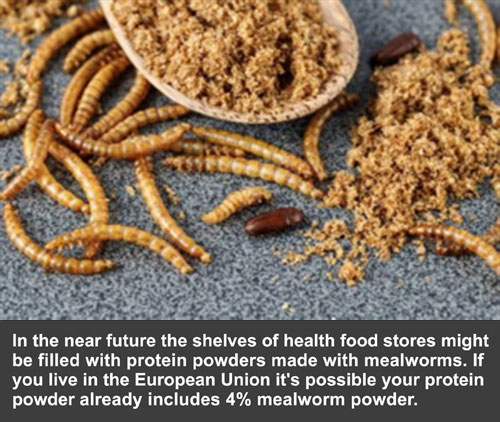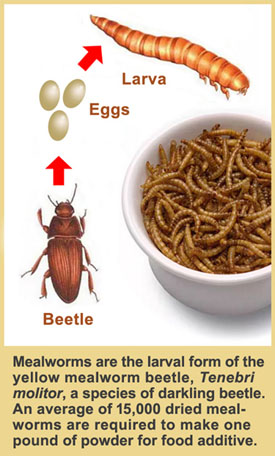In January 2025 the European Commission approved a new “food ingredient” made from dried and ground mealworm larvae—the young form of beetles.
The approval is part of the European Union’s plan to introduce what they claim is “more sustainable protein sources.”
The new ruling allows up to 4% of the insect-based powder in products such as bread, cheese, pasta and preserves. The regulation takes effect on February 10.
The approval is the latest in a long series of steps in Europe during the past 20 years that has seen “insect foods” go from conspiracy theory—and the butt of jokes—to scattered implementation.
Belgium allowed the selling of products made with insects in 2014. Swiss supermarkets began selling insect foods in 2016 after a loosening of food rules in that country. In 2023 the European Commission approved house crickets for use in food in the entire European Union—something that commenced at the beginning of 2024.
Now, a year later, the approval of mealworm larvae expands the European insect choices a step further. The decision follows a scientific opinion from the European Food Safety Authority, which found “ultraviolet treated mealworm powder is safe at approved levels.” Apparently the approved level is up to a 4% mix in other foods.
If you don’t find this particular scientific opinion very palpable, and would prefer alternative protein sources, another scientific finding from different European researchers might pique your interest: Whey protein improves cardiovascular and metabolic health.
According to the whey researchers, when combined with exercise whey protein provides “a promising dietary intervention for improving cardiovascular and metabolic health.” The conclusions were drawn from a meta-analysis of 21 randomized controlled trials investigating the protein’s effect on lowering systolic blood pressure (SBP), LDL cholesterol and total cholesterol levels.
Whey is the liquid remaining after milk has been curdled and strained. It is a byproduct of the manufacturing of cheese or casein and has several commercial uses—including the manufacture of nutritional supplements.
Whey is the primary ingredient in many protein powders, and has traditionally been used by athletes and bodybuilders to obtain the necessary amounts of protein for muscle building and maintenance. Whey protein has a high level of leucine, one of the three branched-chain amino acids, making it ideal for muscle growth and repair; however, ongoing research—like the current study—demonstrate whey protein powder provides nutrients that are beneficial to everyone.
Study details
In the new study, published in the journal Clinical Nutrition in January 2025, the researchers reported a 3-mmHg drop in SBP for individuals under the age of 50 who supplemented with whey protein. This amounts to a 6% reduction in cardiovascular disease risk for the total cohort.
The researchers theorized that the reduction could be due to the “increased bioavailability of bioactive peptides found in whey protein.”
In the 21 studies reviewed, participants also experienced a 5 mg/dL reduction in LDL-cholesterol when whey protein use was combined with exercise. This equated to a 1.5 % reduction in all-cause mortality and 2.5 % risk reduction from coronary heart disease.
The researchers also found that a synergistic effect from combined protein ingestion and exercise contributed to the management of total cholesterol levels.
“Our meta-analyses revealed that whey protein supplementation may lower SBP, LDL-cholesterol, and total cholesterol levels compared with placebo, with exercise conferring an additive effect,” the researchers wrote in the study summary.
Is the protein content worthy of the hype?
Mealworm larvae might be comparable to chicken or beef as far as protein content by weight, but consumers don’t sit for a meal and eat large bowls of mealworm.
In fact, the EU health authorities are recommending the insect primarily as an additive or booster to existing foods; hence, a proper comparison would be to another protein powder taken as a supplement.
For example, Optimal Health System’s whey-based LeanClean Protein provides 20 grams of protein in one of its 22.5 gram scoops.
By comparison, a 22.5-gram serving of raw mealworms will only provide 4 to 6 grams of protein.
If you prefer the dried variety of mealworms—the type approved for supplementing foods in the EU—you’ll fair a bit better: Dried mealworms are about 50% protein, so you’ll get approximately 11 grams of protein from your 22.5 gram scoop—but still about 40% less protein by weight compared to whey.
Learn more about LeanClean Protein from Optimal Health Systems by clicking the banner ad on this page.
– – –
Sources: European Commission, Clinical Nutrition, JustAPedia (Mealworm).



